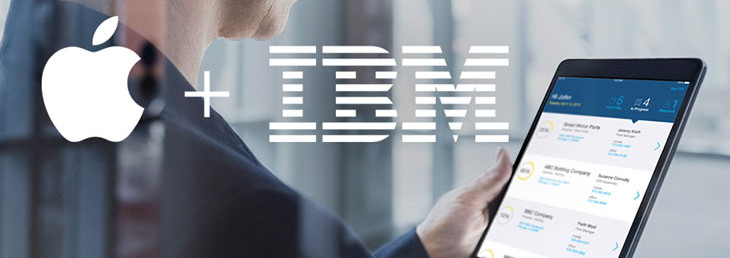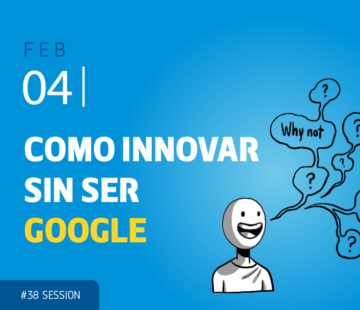IBM + Apple: a partnership between former antagonists shows co-innovation is here to stay

It would be difficult to find two more antagonist companies in the IT market 25 years ago that IBM and Apple. They were not just bitter rivals in the consumer space. IBM was the antithesis of everything Jobs wanted his company to be, considered too big, slow and conservative in Apple’s eyes, corporate culture and mindset. A picture of Apple’s CEO standing in front an IBM sign flipping the bird became one of the many icons furnishing Steve Jobs’ mythology in general and the animosity between these two giants in particular.
But things have change very much during these last 25 years. For start, organizations have started to understand and appreciate the value and need of collaboration, even with those considered as competitors. Or even former “enemies”, as maybe not many other cases prove as irrefutably as the unlikely Apple-IBM partnership officially known as IBM MobileFirst for iOS.
Apple and IBM announced a partnership around enterprise solutions back in July 2014. As in many other collaborative partnerships, the deal started to be considered a couple of years before in a meeting between CEOs of both companies in which they found common challenges and opportunities for their organizations. Apple’s mobile gadgets have started to be used at workplaces because devices as iPhone and iPad became popular tools that their users used not just for personal reasons but also for those related with their jobs. Meanwhile, adoption of their devices by large companies still remained a big challenge for Apple.
Adding the powers of simplicity and analytics
IBM MobileFirst for iOS was described as a combination of Apple’s expertise in mobile computing with IBM’s deep understanding of specific industries and their analytics, workflows, and data needs. For IBM, Apple was the company that defined the look and feel of mobile computing. In the rising era of Bring-Your-Own-Device, mixing the skills of both companies and adding the power of simplicity to the power of analytics was considered as critical as to forget about old resentments.
And time proved it right. By December 2015 the two companies had reached the goal of building 100 apps in verticals like travel, health care, retail, and energy, a number that maybe doesn’t sound like huge if not considering those got rolled out at massive companies, driving the need to buy large quantities of Apple gadgets and IBM data and consulting services. Cross-sell devices and services to enterprise customers drove deals worth $1 billion just during the partnership first year.
Not just about sales
Beyond increasing revenues, the IBM-Apple partnership has brought other added value for both companies. In the past, Apple had never been considered a go-to enterprise vendor in the way Microsoft or IBM were. Apple’s association with IBM has given its name a more credible sound in the ears of Fortune 500 CTOs. IBM acts now as a sales arm for Apple hardware, which the company considers a very strategic value to its overall IT solutions.
Apple campus hosts now dedicated teams formed by people from both companies. To guide the look, feel, and flow of the apps, IBM’s app developers are required to know and use Apple’s Human Interface Guidelines. On the other hand, although Apple has enough development talent, enterprise apps suppose a more complex task when those have to be plugged into existing infrastructure and databases to work properly, a knowledge and practice in which IBM is paramount.
The success of this partnership has motivated clients to demand multiple apps to transform their digital businesses to mobile-first businesses. IBM is pushing ahead the collaboration with a strong embrace of Apple’s Swift programming language that includes doubling the number of iOS developers at Apple-IBM centers from 500 to 1,000, and the opening of a one-of-its-kind development center to house the largest number of Swift developers under one roof.
These historic rivals working shoulder to shoulder are expected to show more dramatic outcomes in the near future, as demonstrated by IBM recently giving iPhone users in-app access to the powerful cognitive capabilities of IBM Watson, using MobileFirst for iOS apps.
